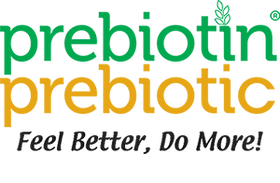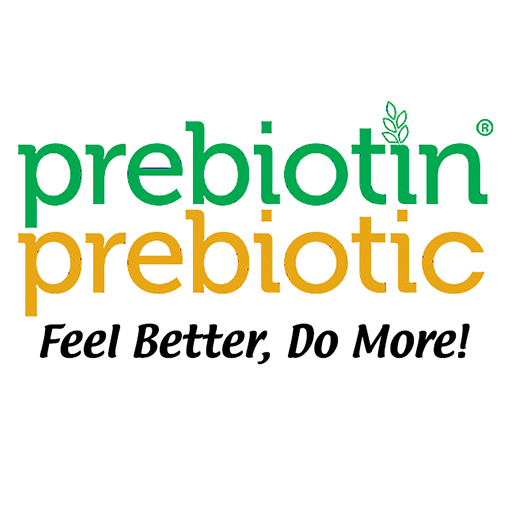
by Dr. Frank Jackson
Prebiotin Academy
Medical Concerns, Scientific Research and Diets
Fatty Liver/Steatohepatitis
Resources on this page:
Scientific Research
We have known for some time that patients with metabolic syndrome and diabetes type 2 have a high incidence of fat in the liver, called fatty liver. In some cases, this seems to induce an inflammation in the liver. This is called steatohepatitis. This inflammation can then lead to severe scarring and cirrhosis. In fact, fat in the liver is now the most common cause for a liver transplant in the US.
It was thought for a long time that the high-fat diet was the cause of fatty liver. Now we know that that idea was wrong. What we now know is that people with the metabolic syndrome, obesity and diabetes type 2 have an abnormal mix of bacteria within their gut, specifically the large bowel or colon. This seems to be caused by the type of diet they eat. The bowel wall becomes inflamed and leaky. Parts of bacteria and even toxic metabolic products that bacteria make then slide through the colon wall and reach the liver. It is here that they cause a fatty liver, inflammation and even cirrhosis.
This medical article outlines the current medical thinking about this condition.
Gut microbiota and liver disease
The following article also outlines the association between liver disease and an abnormal make up of bacteria within the gut.
Interactions Between the Intestinal Microbiome and Liver Diseases
This third article is another closely reasoned association between the gut and a fatty liver. It speaks to the need to change the makeup of the gut bacteria. We still don’t know exactly how to do this but the evidence is very strong that a plant-based diet is necessary. This should include large portions of vegetables that are rich in prebiotics. A reduction in the animal meat portion of the diet is also recommended.
Fatty Liver Dietary Therapy
The term fatty liver means exactly what it says. It is a condition where an extraordinarily large amount of fat collects in the liver causing damage to the liver.
The bottom line of a diet to correct a Fatty Liver is to markedly reduce the saturated fats and red meats in the diet. These foods produce a dramatic and bad change in the bacterial makeup in the colon which in turn causes a leaky gut. A leaky gut allows many undesirable bacterial substances and toxins to enter the blood stream. They go directly to the liver where they induce a Fatty Liver.
Now for the details:
NAFLD (Non-Alcohol Fatty Liver Disease)
Excessive alcohol intake can result in this condition. When it occurs in the absence of alcohol, then it is known as NAFLD. It really doesn’t cause any symptoms and the only abnormality might be an elevation of certain blood liver tests and an abnormal ultrasound exam, both of which indicate damage occurring in the liver.
NASH (Non-Alcoholic Steato-Hepatitis)
Simple fatty liver can then and usually does progress quietly into inflammation of the liver. When this fat in the liver (steato-) induces inflammation, the condition is now more serious and ongoing damage to the liver is occurring.
Cirrhosis of the Liver
When the inflammation leads to scarring and harness in the liver, cirrhosis occurs and in time leads to liver failure and even the need for a liver transplant. It is now known how this sequence of events may occur. It has to do with the saturated fat and red meat in the diet. To understand how this works, it is first necessary to know just a little bit of what is happening in your gut, even now while you are reading this.
MICROBIOME or the GUT BACTERIA FACTORY
A startling revolution has and is occurring regarding our understanding within our gut. Each of us has a simply huge number of different types of bacteria, well over 1000. The total numbers of bacteria are 10 times the number of cells in our entire body. It is now well known that when a predominance of good bacteria are present in the colon, then many good health outcomes occur. Likewise, when the bad bacteria have the upper hand, then some unwanted disorders occur. This entire mix, good or bad, is known as the microbiome or the gut bacteria factory.
Leaky Gut
Here is where the problem starts. When bad bacteria (called Firmicutes) predominate in the gut, the bowel wall weakens. The cells that line the colon do not sit tight one against the other. They separate and fluids, chemicals made by bacteria and even parts of and whole bacteria can and do leak through. Where do they go? They all enter a special vein (the portal vein) that goes directly to the liver. So these bacterial toxins and the bacteria themselves can and do cause damaging changes to the liver itself.
The Goal of a Fatty Liver Diet
Simply put, it is to change permanently the makeup of gut bacteria from a bad balance to a good one. In so doing a healthy gut wall is restored and toxins and parts of bacteria stop going to the liver. The major factors in this new dietary program are:
- Reduced saturated fat ingestion
- Reduced red meat consumption
- Increased plant fiber in the diet
Fats in the Diet
Fat is a necessary part of good health in everyone’s diet, however, it is the type of fat and how much that is important. Fats generally come in 2 types – saturated and unsaturated. This means that certain parts of the molecule are filled with hydrogen (saturated) or spots on it are empty of hydrogen (unsaturated). Health research over the years has found that excessive ingestion of saturated fats may have bad health consequences such as heart disease. On the other hand, unsaturated fat as is found in many vegetable oils such as olive and canola oil provide health benefits. Saturated fats are mostly found in animal products such as red meat and fried and deep fried cooking, while unsaturated fats are generally found in vegetables and nuts. What is very new and startling research is that the bad bacteria within the colon prefer the saturated fat and these fats lead to the abundant growth of unwanted bacteria. So, you see the problem. It is not that the fat you eat gets packed into the liver. Rather, it promotes dysbiosis of the gut – a really bad collection of bacteria – which then promotes a leaky gut. Here is where the problem lies!
Plant Fiber, Especially Prebiotic Fiber
A huge amount of research has occurred studying the effect of plant fiber within the gut. It has long been known that large fiber ingestion resulted in soft large regular bowel movements. In addition it was found that it was also associated with a reduction in many of the chronic disorders of the colon that occur with the Westernized diet such as colon polyps and cancer, diverticulosis, inflammatory bowel disease and irritable bowel syndrome. However, it has just become known just how this occurs. It is due to the fact that most dietary fiber reaches the colon unchanged and there it acts as the nourishment for the good bacteria that live there. When they grow prodigiously, many health benefits occur.
HOW TO DO IT?
- The regular Westernized high saturated fat diet is one in which about 40% of the calories are from saturated fat, mostly animal and dairy fat and deep fried foods. This is the type of diet that produces a dysbiosis of the gut leading to a leaky gut and then to fat in the liver. The goal is to change that diet to no more than 20% of the calories eaten coming from these saturated fats.
- Reduce red meat ingestion. You do not need to eliminate red meat but reduce the frequency and size of the portions. Look for alternatives like seafood, shell fish and white poultry, all of which are low in saturated fats. Many types of fish are full of the desirable polyunsaturated fats.
- Increase plant fiber ingestion to 25 to 38 grams per day depending on sex and size. Be sure to select significant quantities of the vegetables that are rich in the prebiotic fibers (see below). A prebiotic supplement such as Prebiotin may be helpful.
As you will see, this diet can be used for weight reduction as well. In addition, it is quite similar to the diet used for heart patients which is a similar low saturated, low cholesteral diet. Most diets for these patients will fit perfectly well for those with a fatty liver.
Special Considerations
- Shopping – It is best to shop after you have eaten, when impulse buying is reduced. Try to have a shopping list and stick to it. This diet works best with fresh foods found around the periphery of most larger food markets. Shop for what you need and use what you buy fairly soon. It is a good habit to get into.
- Labels – Learn to read labels. You will learn how many calories are in the foods you buy. Be aware that most food manufacturers will intentionally make the serving size small so that the calorie per serving is a smaller number. Don’t be fooled. Also, read the ingredients. Many prepared foods have non-nutritive substances added to them to ensure long shelf life, taste and marketing features. If you don’t recognize a substance, buy something else.
- Packaged foods – These are mostly found in the center aisles of stores. They may be boxed, bagged, frozen or in bottles. There are many hidden substances to say nothing of saturated fats within many of these. Eating fresh means reducing the dependence on packaged foods. This is smart and healthy in many ways.
- Fast foods – These food parlors are notorious for feeding their customers very high calorie and high saturated fat entrees. Be very cautious of most of them. You have to realize that saturated fats and meats are foods subsidized by the government, meaning that the fast food parlor can get saturated fat and meats into their food at a rather low price.
- Sugar and soft drinks – We all know now that sugary foods and high fructose corn syrup drinks are major health problems. While they are not specifically contraindicated in this Fatty Liver diet, they do add calories with virtually no health benefits.
- Restaurants – Tell your server that you are on a low fat diet and to please not add butter to preparations. Most cooks keep large bowls of butter in their kitchen and use it copiously to enhance flavor.
- Meats – Cutting back on meat is not as hard as it might sound. The food buyer needs to select meats that are not as well marbled as you previously bought. Also, begin to downsize the portions, often to the size of a deck of cards. Use meat as a side portion in a meal rather than taking up the entire center portion of the plate. Meat 2 or 3 times a week rather than 5-6 is easy. Look for tasty alternatives.
- Fish and poultry – Salmon, Arctic char, albacore tuna, lake rout herring and mackerel are all full of healthy polyunsaturated fats. White meat of chicken and turkey has very little or indeed, any fat. Cooking any protein animal food is best with grilling, broiling or roasting rather than pan frying or deep frying where large amounts of saturated fat gets into the food.
- Prebiotics – Remember that it is these specialized fibers that are most effective in increasing the numbers of good bacteria in the gut. Inulin and oligofructose are the 2 prebiotics found naturally in so many goods. These include wheat, onions, garlic, chicory root, agave, yams, asparagus, avocado, leeks, bananas and most root vegetables. Try to eat some of these foods every day. A powdered prebiotic dietary supplement, prebiotin, is also available.
Meat, Poultry, Fish, Other Protein
|
Choose |
Avoid |
| Lean Meats: Select meats with minimal marbling. Trim away excess fat. Generally, a serving size is about the size of a deck of cards. Broil or grill to allow excess fat to drip away. | Fatty Meats: Corned beef, mutton, ham, bacon, luncheon meat, short ribs, spare ribs, sausage, hot dogs, scrapple, sandwich spreads, all organ meats |
| Poultry: Chicken and turkey with skin removed. | Self basted poultry; processed poultry products such as turkey franks or bacon; chicken frankfurters, or scrapple |
| Eggs: Egg whites and low cholesterol egg substitutes. Whole eggs as recommended by a physician or nutritionist. | Check with your physician or nutritionist regarding how many whole eggs per week. |
| Seafood: Fish oils are particularly heart healthy. Those with the highest fish oil include swordfish, mackerel, albacore tuna, salmon, walleye, Pollack, and blue fish. Fish should be eaten at least 3 times per week. | Any seafood that is sauteed or deep fried |
| Cheese: Select low fat cheese such as cottage cheese, pot cheese, mozzarella, ricotta and Swiss. | Most cheeses are high in saturated fat. Avoid cream cheese, processed cheese and cheese spreads. |
| Wild Game: Elk, deer (venison), Bison, pheasant, rabbit, wild duck and squirrel | Domestic duck or goose |
| Beans: Beans of almost any type, peas, lentils; tofu; peanut butter | Canned baked beans (sugar and extra calories added). Check labels. |
| Milk: Skim, non-fat (fluid, powdered, evaporated, condensed), buttermilk, lactose-reduced and sweet Acidophilus made from skim milk | Any milk product made with whole or 2% milk, chocolate milk, milkshakes, eggnog, coconut milk |
| Yogurt: Made from skim or non-fat milk | Made from whole milk or custard style |
| Creamers: Only those containing polyunsaturated oils | Any containing coconut or palm oils; whipped, sour, light, heavy, half & half creams |
Cereals, Grains, Complex Carbohydrates
|
Choose |
Avoid |
| Cereals, Dry or Cooked: Oat cereals are particularly heart healthy. Check labels on all cereals for total calories, sugar and sodium. Cereal grains are low in saturated fat. | Coconut containing cereals, instant hot cereals, granola |
| Pasta & Rice: Noodles, spaghetti, macaroni, brown rice (preferred), wild rice | Prepared with whole eggs, cream and cheese sauces; canned or boxed noodle and macaroni dishes; canned spaghetti dishes |
| Baked Goods: Whole grain breads and rolls; low fat or homemade muffins, pancakes, waffles and biscuits using polyunsaturated spread or oil and non-fat milk | Butter or cheese rolls and breads; croutons; commercial biscuits, muffins, pancakes, pastries, sweet rolls, donuts, croissants, popovers |
| Tortillas: Corn, soft flour made with unsaturated oils | Soft flour tortillas made with lard, shortening, hydrogenated fats, coconut and palm oils |
| Crackers/Snacks: Unsalted crackers, pretzels, popcorn prepared with air popper or mono/polyunsaturated oil | Salted crackers or snacks; fried snack foods; any snacks or crackers containing saturated fats, coconut or palm oils, hydrogenated or partially hydrogenated fats; cheese crackers or snacks; potato chips; corn chips; tortilla chips; chow mein noodles; commercial buttered popcorn |
Fruits and Vegetables
|
Choose |
Avoid |
| Vegetables: Fresh, frozen or low sodium canned; low sodium tomato and vegetable juices | Spaghetti sauce; creamed, breaded or deep-fat fried vegetables; vegetables in sauces |
| Fruit: Fresh, unsweetened dried fruits; canned or frozen packed in water, own juice or light syrup preferred; all fruit juices (unsweetened preferred) | Canned or frozen packed in syrup, sweetened dried fruits, coconut, fried snack chips |
Fats
Fats in nuts, seeds and avocado are mostly unsaturated and healthy. They are high in vitamins and minerals, but they also contain high calories and should be limited.
|
Choose |
Avoid |
| Polyunsaturated Fats: Sunflower, safflower, corn, soybean, cottonseed, sesame oilsMonosaturated Fats: Canola, olive, peanut oils | Butter, lard, beef tallow, salt pork, bacon, bacon drippings, ham hock, animal fat, shortening, suet, chocolate, cocoa butter, coconut, coconut oil, palm and palm kernel oil, hydrogenated fat |
| Spreads: Tub type vegetable spreads made with canola or other mono- or poly- unsaturated fats | Hardened stick margarine or butter, any spread made with saturated or trans fat |
| Salad Dressings: Olive oil and balsamic vinaigrette. Check labels for saturated or trans fats. | Made with saturated or trans fats, egg yolks |
| Seeds and Nuts: Unsalted, pumpkin, sesame, sunflower and others not on avoid list | Cashews, macadamia, pistachio, Brazil |
Miscellaneous
|
Choose |
Avoid |
| Desserts: Homemade baked goods made with unsaturated oils or spreads, skim or 1% milk and egg substitute or egg whites; gelatin; angel food cake; ginger snaps; fruit ice, fruit whips, sorbet, sherbet; low-fat frozen desserts; puddings, custards or junkets made with non-fat milk and egg allowances | Made with whole milk, cream, butter, chocolate and egg yolk; commercially prepared cakes, pies, cookies, pastries; ice cream; chocolate desserts; frozen cream pies; commercial dessert mixes such as cake and brownie mixes; chocolate; candies made with cream fillings |
| Beverages: Sparkling or mineral water, seltzer, club soda – unsweetened preferred; coffee; tea; Postum | Tonic, commercially or home softened water, instant cocoa mixes, Dutch processed cocoa |
| Soups & Sauces: Fat-free, low-salt broth, consomme and bouillon; homemade soup skimmed of fat; cream soup and sauces made with non-fat milk and fat allowance | Soup made with whole milk or cream; broth containing fat; canned soups; dehydrated soup mixes; bouillon not labeled low-sodium; gravy and sauces made with butter, other animal fat and whole milk |
| Other: Spices, herbs, pepper, lemon juice, garlic and onion powder, Tobasco, catsup, mustard, vinegar, relishes, jam, jelly, marmalade (unsweetened preferred) | Commercially fried foods, pickles, any foods containing items not allowed |
Explore More
Medical Concerns, Scientific Research and Diets
-
Antibiotics and the Microbiome
-
C. Difficile
-
Calcium and Bone Density
-
Cancer
-
Celiac Disease and Gluten Intolerance
-
Children and Prebiotics
-
Colon Gas and Flatus
-
Colon Polyps and Cancer
-
Constipation
-
Crohn’s Disease
-
Diabetes Type 2
-
Diarrhea
-
Diverticulosis
-
Dysbiosis
-
End Stage Kidney Disease/Dialysis
-
Fatty Liver/Steatohepatitis
-
Fissure, Fistula and Abscess
-
Gut-Brain Connection
-
Heart and Cardiovascular
-
Hemorrhoids
-
High Fiber Diet
-
Immunity
-
Inflammatory Bowel Disease
-
Irritable Bowel Syndrome
-
Leaky Gut Syndrome
-
Low Fat Diet
-
Low Fiber Diet
-
Obesity and Weight Management
-
Toxins in the Colon
-
Ulcerative Colitis





